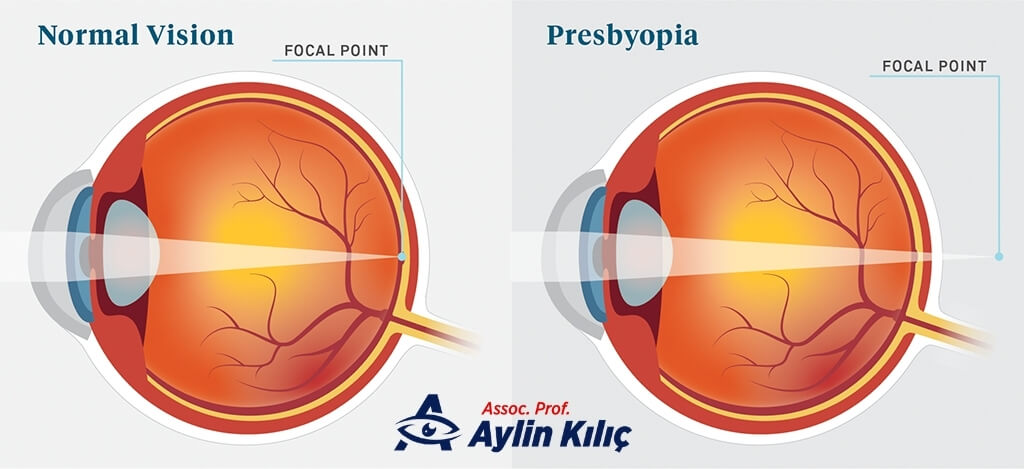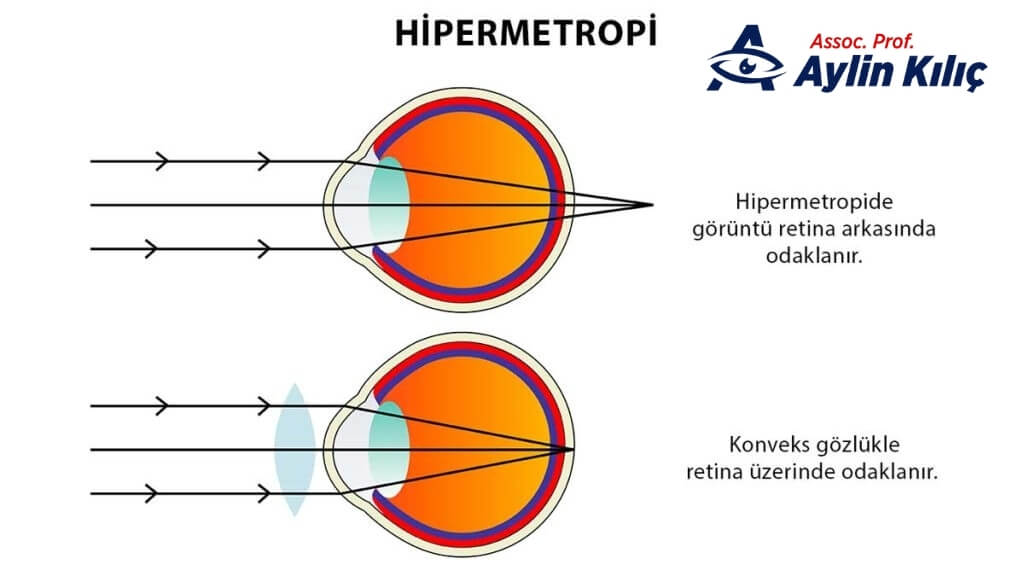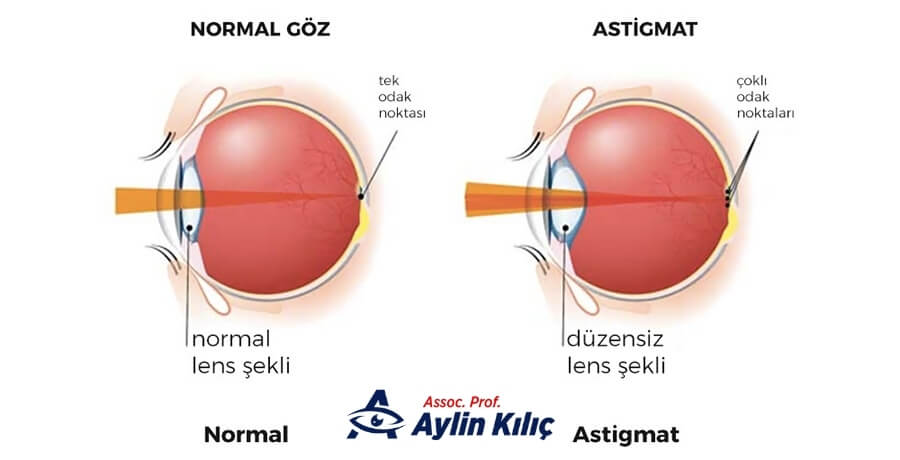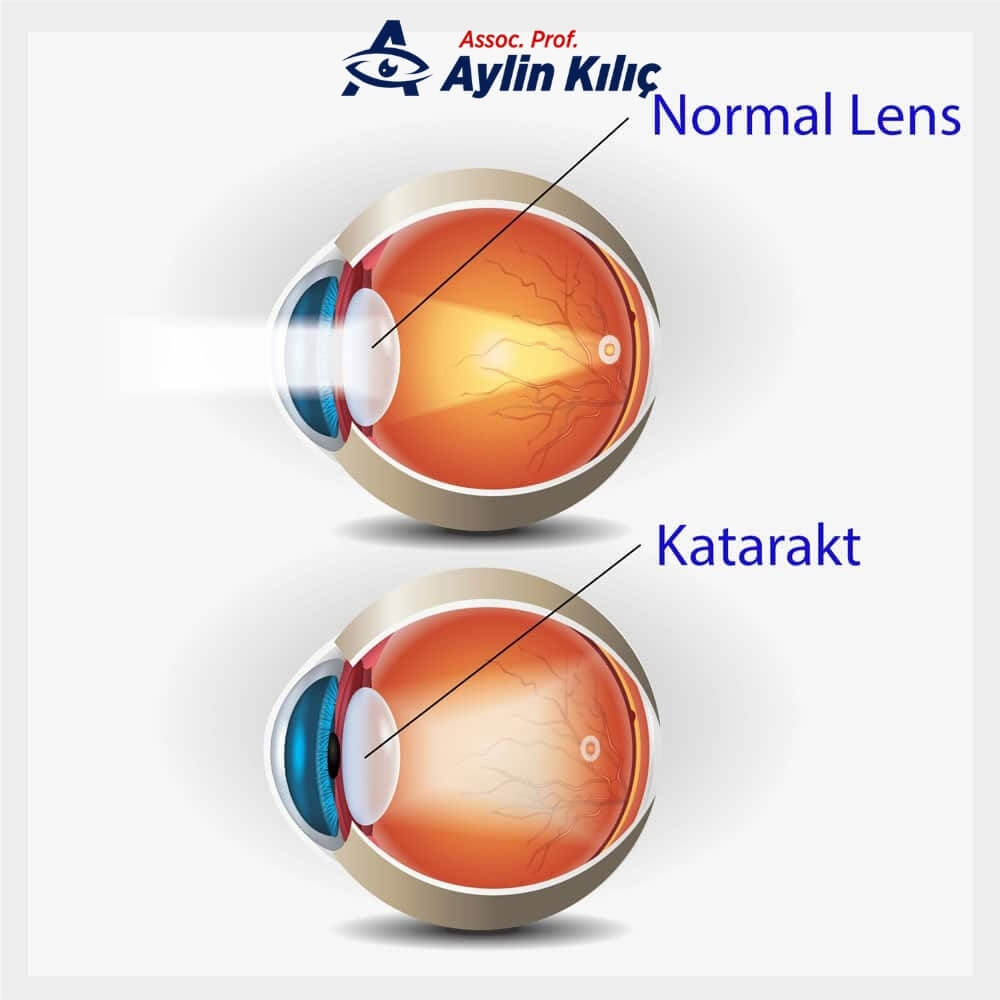Nearsightedness can be caused by a variety of factors and the specific cause may vary from person to person. For the most effective and correct treatment, the exact cause must be determined. At this point, it is imperative that you consult your specialist doctor and undergo a detailed examination. Yes, a detailed examination is essential, but in this content, we will provide you with preliminary information by addressing the most common causes of nearsightedness.
Causes of Nearsightedness?
For a better understanding, let’s evaluate the most common causes in items.

Presbyopia: This is a natural age-related change in the eye’s ability to focus. It usually occurs around the age of 40. The lens of the eye becomes less flexible, making it difficult to focus on close objects. Presbyopia is a common cause of near vision impairment and often leads to the need for reading glasses or bifocal glasses.

Hyperopia (Farsightedness): Individuals with hyperopia have difficulty seeing nearby objects clearly. This occurs when the eyeball is too short or the cornea has too little curvature, causing light to focus behind the retina instead of on the retina. Hyperopia can lead to blurred near vision and corrective lenses may be prescribed to improve near vision.

Astigmatism: Astigmatism is one of the conditions in which the cornea or lens has an irregular shape, causing impaired vision at various distances. It can lead to difficulties in both near and distance vision. Corrective lenses such as glasses or contact lenses are usually used to correct astigmatism. Laser treatments are also often preferred for patients who do not want to wear glasses.

Cataract: Cataracts occur when the natural lens inside the eye becomes cloudy. As cataracts develop, they can cause blurred vision, glare and difficulty focusing on close objects. Cataract surgery, where the cloudy lens is replaced with an artificial intraocular lens, can effectively restore clear vision.
Eye Fatigue: Occasional prolonged use of digital devices, reading in low light or engaging in activities that require intense focusing for long periods of time can lead to eye strain. Eye strain, although not well known, can be one of the causes of nearsightedness. Fatigue can result in headaches or blurred near vision. Taking breaks, adjusting lighting and wearing appropriate glasses can help alleviate eye strain.
Medical Conditions: Some medical conditions, such as diabetes, can affect the blood vessels in the eyes and lead to vision changes, such as nearsightedness. Regular eye examinations are important to manage and address vision changes associated with underlying health conditions.
Medication Side Effects: Some medications can cause changes in vision or contribute to near vision disturbances as a side effect. It is very important to discuss vision changes that coincide with starting a new medication with a healthcare professional.
Refractive Errors: Refractive errors such as myopia (nearsightedness), hyperopia (farsightedness) and astigmatism can cause difficulties focusing on close objects. Corrective lenses such as glasses or contact lenses are often prescribed to correct refractive errors.
Yes, these are some of the reasons for nearsightedness. But you should remember that if a person is experiencing nearsightedness, it is very important that they undergo a comprehensive eye examination by an eye health professional.
The examination can help identify the specific cause of the vision problem and, based on the diagnosis, appropriate measures such as prescription glasses or surgical interventions can be recommended. In other words, consulting a specialist is a necessity both in determining the cause and in administering treatment.

